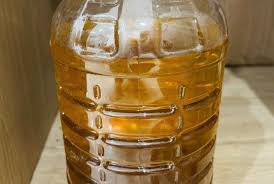Feed-grade oil is typically crude, unrefined, and low-cost, meant for livestock consumption. When misused in human food, its toxins can enter the body and cause chronic diseases
Cooking oil for human consumption and feed oil differ completely in terms of processing purposes, quality standards, and safety levels. However, the current risk of substandard oils re-entering the food chain is raising serious public concern.
1. What is “dirty oil”?
According to common definitions, dirty oil refers to cooking oil that fails to meet food safety and hygiene standards. This includes crude, unrefined oil, recycled oil, or oil that has been chemically altered. Such oils often lack clear origins and may contain various impurities and toxins harmful to human health.
When asked whether feed oil is safe for human consumption, Assoc. Prof. Dr. Nguyễn Duy Thịnh, former lecturer at Hanoi University of Science and Technology, firmly stated: “Absolutely not!”
Feed-grade oil is mostly crude, unrefined oil filled with impurities. It is used in feed for livestock, poultry, or aquatic animals. Using this type of oil in food for humans is extremely dangerous.
2. The health risks of feed oil and recycled oil
Not only feed oil but recycled cooking oil also poses a hidden threat within the food supply. After being used multiple times for frying, cooking oil can become degraded and form harmful chemical compounds. This is a serious danger that consumers should not overlook.
Recycled oil is often sold to unregulated manufacturers, who then “reprocess” it into what appears to be new cooking oil. In many cases, its smell and color have been altered, making it difficult to detect with the naked eye. However, if such oil returns to the dining table, its toxins can enter the body and accumulate over time, potentially causing chronic illnesses such as cancer, hepatitis, and weakened immunity.

3. Distinguishing Clean Cooking Oil from Contaminated Oil
The key question is: How can consumers distinguish between clean and dirty cooking oil when they lack the tools or knowledge to inspect it?
According to experts, standard cooking oil typically comes with clear labeling, full information about the manufacturer and expiration date, and is distributed through supermarkets or reputable stores.
In contrast, unregulated oil often comes in unbranded plastic containers, is suspiciously cheap, lacks quality certification, and poses a serious threat to public health.
4. What illnesses can untraceable cooking oil cause?
The immediate health impacts include liver, kidney, and digestive system disorders. Over time, accumulated toxins can lead to cancer, nervous system damage, and metabolic disorders.
Children, the elderly, and people with chronic illnesses are the most vulnerable to the harmful effects of dirty oil consumed through daily meals.
Assoc. Prof. Dr. Nguyễn Duy Thịnh advises consumers to choose safe cooking oils by purchasing branded products, certified by health authorities and bearing official quality inspection seals.
He strongly warns against being lured by cheap prices into buying unlabeled or unverified oil sold on the market.
He also emphasizes that regulatory oversight is essential—not only at the manufacturing level but also across distribution and retail channels—to protect consumers from the dangers of contaminated and feed-grade oils.
Source: giaitri.thoibaovhnt.vn
